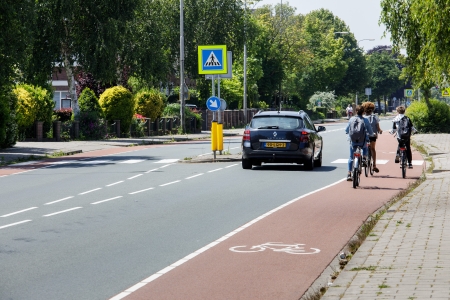Car
In a car, children up to a height of 135 cm must be seated in child restraint seats. The use of these seats and boosters in cars reduces the risk of serious injury. After all, standard seat belts have not been designed for young children and do not offer the protection they offer adults [12]. Yet, several (international) studies show that child protection systems are often used inappropriately [13] [14] [15], for example because the seat belt has been fitted incorrectly or the child restraint seat has been installed incorrectly. Also see the answer to the question How often are children not properly restrained in cars and how dangerous is this?.
Bicycle
When transporting children on the back of a bicycle (in a bicycle seat), it is important to have spoke protectors to prevent the child’s feet from getting caught in the spokes [11] [16]. A bicycle helmet may also increase the safety of transport by bike. SWOV estimates the annual maximum reductions of the number of cycling casualties among children up to the age of 12 to be 5 road deaths and about 200 serious injuries, if all children aged 12 or younger were to wear bicycle helmets at all times [17]. Also see SWOV fact sheet Bicycle helmets.
In addition to front- or rear-mounted bicycle seats, (electric) cargo bikes or ‘child carts’ (such as the Dutch Stints) are also used for transporting children. No research into the traffic risk of different types of bicycles has been done.
By car or by bike?
It is hard to ascertain how children may best be transported (e.g. when taking them to school): by car, by bike, or on foot. Taking the mode of transport on its own merits, it is much safer to transport children by car, since they are then properly protected against crashes. Yet, children that walk or cycle to school, learn and practise skills that are needed to become safe road users (also see the answer to the question How does traffic education and practice affect children’s road safety?). If a lot of parents take their children to school by car, the children will not acquire these skills, while creating an unsafe environment for children that do walk or cycle to school. Infrastructural measures may improve safety by reducing the maximum speed in places where walking and cycling children abound. These different types of road users may also be separated, e.g. by the strategic planning of parking areas.
